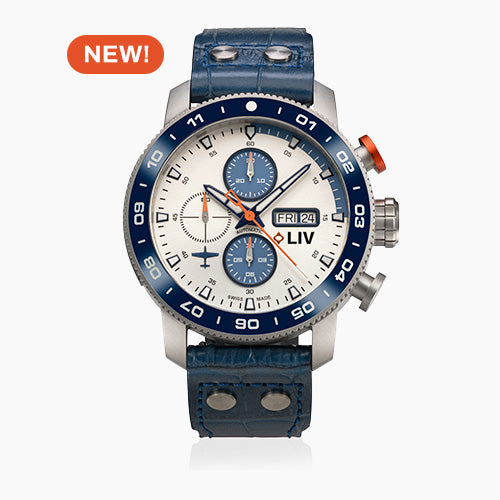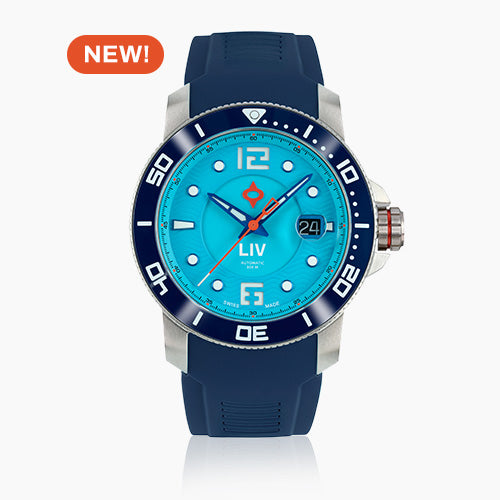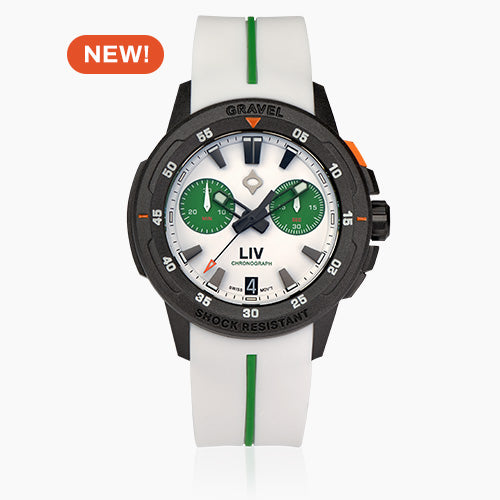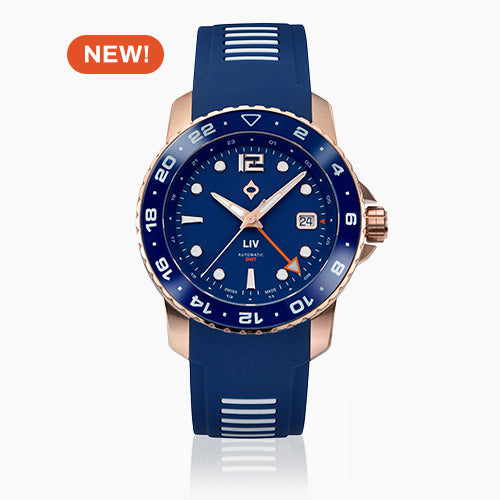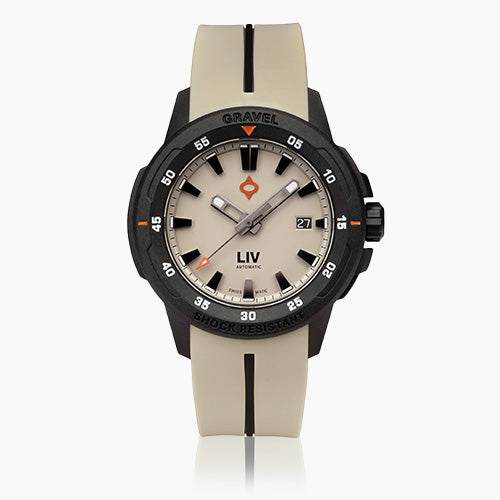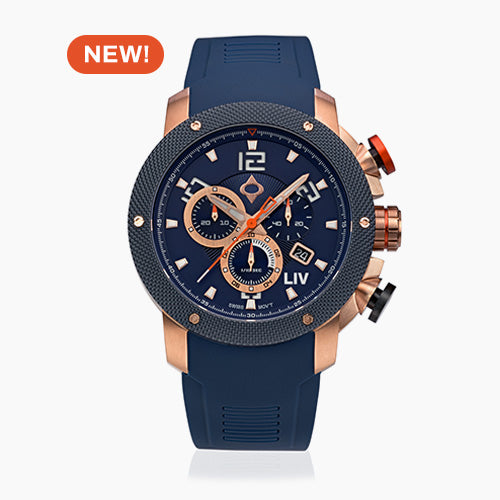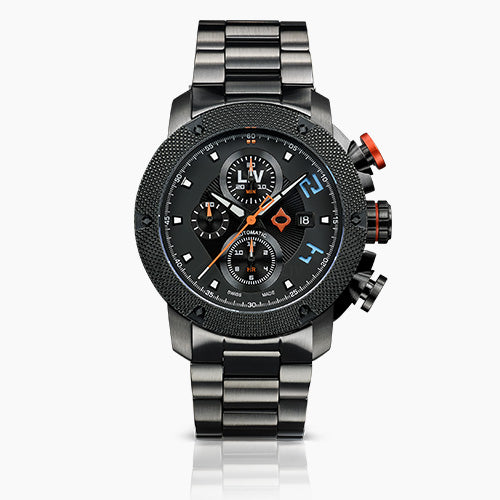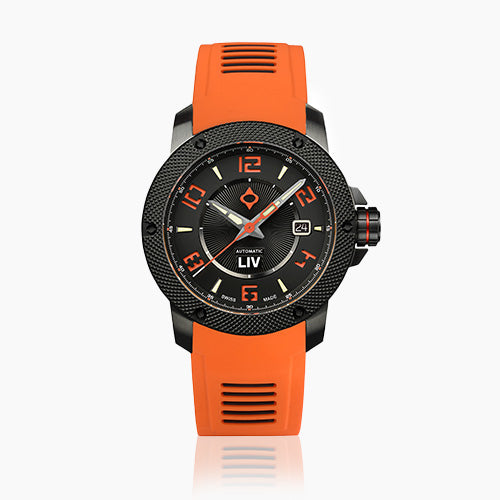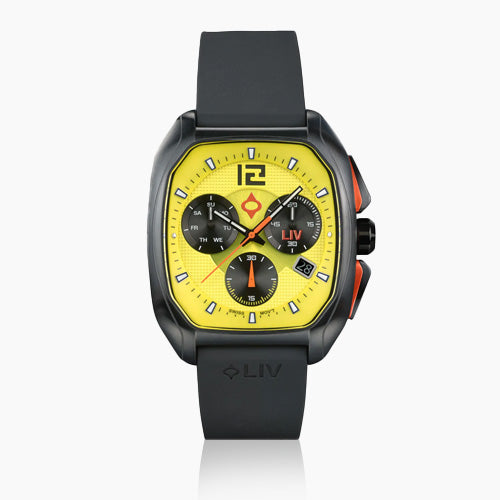
What makes a LIV watch? Part 2
Share
The decision-making process
We now turn to the second article in our five-part series on ‘What Makes a LIV Watch?’ In the first article, we looked at what were the roots of Chaz’s passion for watches, as well as what it is that inspires us in all that we do each and every day.
From the lofty heights of inspiration we must turn to the gritty essentials that need to be considered before a watch can even be made. This refers to the decision-making process that’s needed for any watch to be made or re-styled. There are many different decisions that need consideration. What are these decisions that are integral to the watch-making process? What considerations go into deciding what path to take with a certain watch model? This article will focus on these decision-related factors that have had to be pondered and explored for each and every model ever released by LIV Watches.
Every detail is the result of a thorough decision-making process
The first decisions we made
It’s a good idea to commence this dive into the decision-making process at LIV Watches by going back to our early days. The decisions we made as a company and brand at that time not only launched us successfully, but set the path for our ongoing success. So, what was the thinking behind the release of the first few models that launched the LIV Watches brand, namely the GX1 and Rebel collections?
There were key things that needed to be considered and then decided at the beginning of our LIV Watches journey. Principal among these decisions for the GX1 model, for example, were those relating to what defined LIV from the beginning. i.e., its chosen niche:
There were key things that needed to be considered and then decided at the beginning of our LIV Watches journey. Principal among these decisions for the GX1 model, for example, were those relating to what defined LIV from the beginning. i.e., its chosen niche:
From the beginning Chaz knew that LIV had to be a boutique, niche watch brand. It was decided that being the brand for a particular gender would be the way to go, and so the focus was on men’s watches. This made sense since LIV’s design aesthetic meant that the brand’s watch sizes tended to be larger on the wrist and more masculine-looking.
Men tend to be more attracted to the mechanics of the watch, akin to the near-spiritual love that many men have for the mechanics of cars.
There are many women who love and appreciate watches (like me!) but the watch industry acknowledges that men tend to have more affinity to watch-making in general.
Men love cars and watches. We think these two things are connected.
Then there were those considerations regarding what type of watch (and, hence, specific movement) the first watch launched by LIV would have. It needed to be something special, something that would highlight the potential and verve of LIV Watches from the start. That special something was the chronograph. For Chaz, it was the one function that has always intrigued him. There’s so much more to work with when designing and building a chronograph, from what functionality it should have, to what sub-dials to use and where on the dial they should be positioned, and so forth.

Although Chaz was super-eager to get cracking on an automatic chronograph, he knew that his small start-up needed to be more cautious where it counted. And so he opted for the excellent Ronda Caliber 5040.D quartz movement for the GX1 model. Quartz was used initially to make the first model as accessible as possible to our customers fans from the outset.

The Ronda Caliber 5040.D quartz movement
Asking the essential questions
One can see above just how many decisions had to be made before the LIV GX1 could even be made. It was the ages-old watch-making dilemma of choice, choices, choices. Trust us, there was a lot of hand-wringing and head-scratching with our very first collection! Every single watch-maker worth their salt has to go through the same decision-making ‘opera’ for every model they want to produce. Can it be fun and even exciting? Sure! Can it be exhausting and nerve-racking? You bet!
So, what are the questions that we need to ask ourselves every time we consider a new model or revisiting an existing model? Well, here goes:
Why? Seriously, the ‘why’ must be asked. Why do we feel this model is needed?
What type of watch are we aiming for?
Based on the type of watch intended, what movement will this watch have? Is there a specific movement in mind?
Who is this model made for? What type of fan will this model appeal to?
Why will our fans want to have it? What will be its ‘must-have’ clincher?
What price point range should this watch fit in? What will that determine about its features or extras?
Does this proposed or re-purposed model fit the LIV Watches persona and ethos, i.e., will it be innovative, beautifully made (and Swiss Made, of course), and of high quality at an affordable price for its category?
Why the hell are we doing this to ourselves?! Okay, we don’t really ask ourselves this question because, hey, we love what we do, even when it does get stressful!

Chaz hard at work with our collaborator and friend, TJ Eisenhart
Other important considerations
We’ve outlined above some of the important questions that we must ask ourselves for any watch we produce. However, there are other issues that also need to be considered once those questions have been pondered. These are factors that are allied (and equally important) as the questions above. They include:
Functionality - what are people looking for? Watch trends come and go and that can be reflected in the choices we make regarding new or restyled watches. For example, alarm watches had a dramatic decline with the advent of smart gadgets, but have had something of a comeback in recent times.
Materials - what is more ‘in’ or trendy out there? For example, copper has become very fashionable in recent years and explains why we have incorporated it into some of our newer models.
Sizes - is the market into bigger, smaller, thinner? This too can ebb and flow with changing fashions and market demands. Our design aesthetic veers toward the larger-sized watch but we are attentive to market trends in this regard too.
However, whatever the market trend or the latest fashion, we at LIV Watches always strive to try and give any of our watches our own little ‘twist’. This can be with the choice (or even matching) of different materials for our cases and bezels, or the colors we choose for our dials. Many of these factors will come into even more prominence during the design phase of a watch, which will be covered in greater detail in the next (third) article in this series. Yet they are important factors that need to be considered at the deliberation, pre-design stage.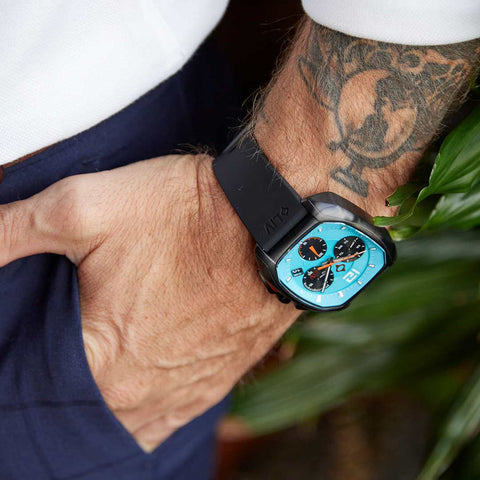
The Rebel DDC in TJ Blue
Quality always wins
A hugely important consideration that informs every decision LIV Watches makes is that of quality. A strict, passionate adherence to quality is what has defined the company and brand since the very beginning. That quality translates to even the suppliers that LIV Watches uses for our watches. As Chaz stresses, “The one thing we will never compromise on is the quality. We’re using the same processes and the same suppliers, the same partners that we’ve used since day one. We have not changed. And under no circumstances will I ever change that. That’s because we have a proven, winning record here based on the quality standards we expect LIV to have.”
Chaz raises quality in the context of watches sent in for maintenance or repairs. He speaks about he and his team are getting watches from the first production runs five years ago and how amazed they are at how the watches still look terrific - even brand new! Chaz is still so proud to see how well-made those watches all were.
—Chaz
Watch freak and Co-Founder at LIV Watches
Anything but 'mono'
For Chaz, it was very important that LIV Watches make every effort to not become a ‘mono’ brand. By way of example, he cites the luxury Swiss brand, Hublot, which he believes has become completely hemmed in by its famous watch case. “For some reason they can never get away from that case. Every watch that they’ve ever made that doesn’t look exactly like the original Big Bang failed,” Chaz says. He reckons that Hublot has simply not been able to successfully sell a watch that didn’t conform to their most iconic case design. He continues: "That’s because the consumer automatically assumes ‘that’s a Hublot’ and anything else isn’t a Hublot. If it doesn’t look like that, it isn’t a Hublot." It’s a compelling, sobering point for any watchmaker.
That’s precisely why, given the huge success of the GX1 collection, LIV opted for the radically different Rebel collection with its dramatic, square case. Chaz says how, “We knew it was a big risk and everyone told us not to do it,” but he wanted to show the watch world (and our fans, of course) that LIV was versatile and not bound by just one shape or style. It was a case of ‘anything but mono’ for Chaz! That thinking has always been at the forefront of any decisions made regarding watch models at LIV Watches. Anything but mono, baby!
LIV is proud of our array of styles. Anything but mono, baby!
Our fans, the ultimate consideration
Chaz has an aversion to the term ‘market research’. Instead, for him and everyone at LIV Watches, it’s the fans that ultimately determine what watches can be made and for what reasons. The company knows that the fans have become so loyal because they believe in the brand and our vision as watchmakers. That is why our fans are the ultimate market consideration, a hundred times better than any so-called ‘market research’.
Ultimately, in our quest to produce new or restyled watches it all comes down to two main considerations that mean everything to LIV Watches: quality and our fans.
